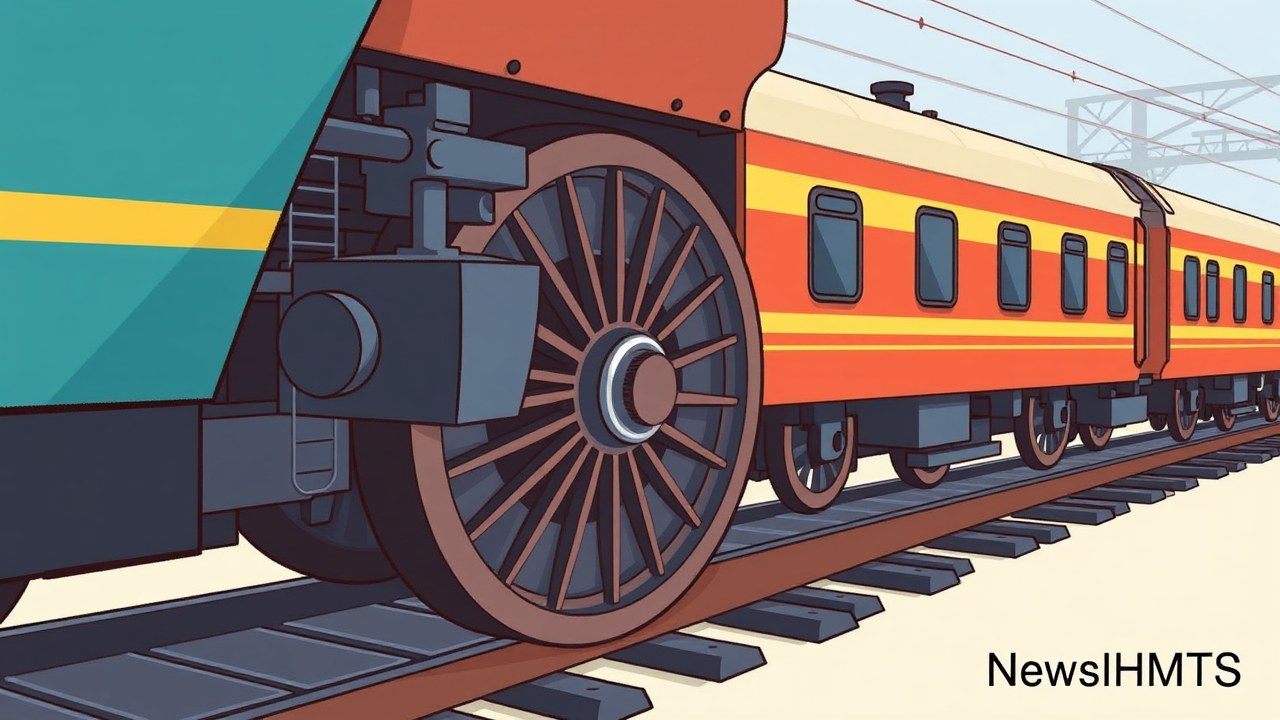 NewsIMTS
NewsIMTSTrain wheels are not perfectly cylindrical but slightly conical in shape, with the inside diameter larger than the outside. This clever engineering design helps trains stay stable and safe on tracks. The conical profile (typically at angles between 1 and 1) allows wheels to naturally steer themselves to the center of the track. When a train shifts sideways, one wheel rides higher on its cone while the other rides lower, creating a self-centering force that prevents derailment. On curves, this design automatically compensates as the outside wheel (which must travel farther) rides on a larger diameter section while the inside wheel rides on a smaller diameter. This reduces wear, minimizes noise and vibration, lowers energy costs, and provides a smoother ride for passengers. Engineers must precisely calculate the conical angle to balance lateral stability, wear resistance, and curve negotiation capabilities. This elegant solution has helped make trains safe and efficient for over a century. (Updated 3 Nov 2025, 12:45 IST; source: link)
The Self-Centering Magic of Conical Train Wheels
Train wheels have a special conical shape instead of being perfectly cylindrical. This design makes the inside edge of each wheel slightly larger in diameter than the outside edge. When a train moves slightly off-center on the tracks, this conical shape automatically guides it back to the middle. How? If the train shifts right, the right wheels run on a larger diameter section while the left wheels run on a smaller diameter. This creates a natural steering effect that pushes the train back toward the center without needing any special mechanisms. This simple but brilliant design has been keeping trains safely on tracks for over a century, preventing countless derailments.
How Conical Wheels Master Railway Curves
The conical shape of train wheels solves a critical problem when trains navigate curves. On a curve, the outer rail is longer than the inner rail, meaning the outer wheel needs to travel farther than the inner wheel. The conical design automatically adjusts for this difference. As the train enters a curve, it shifts slightly outward, causing the outer wheel to ride on its larger diameter portion while the inner wheel rides on its smaller diameter portion. This clever arrangement means both wheels can rotate at the same speed while covering different distances. Engineers typically design these wheels with cone angles between 1:20 and 1:40, carefully calculated to balance stability, reduce wear, minimize noise, and provide a smoother ride for passengers.
Key Points
- The conical profile (typically at angles between 1 and 1 ) allows wheels to naturally steer themselves to the center of the track.
- Train wheels are not perfectly cylindrical but slightly conical in shape, with the inside diameter larger than the outside.
- This clever engineering design helps trains stay stable and safe on tracks.
